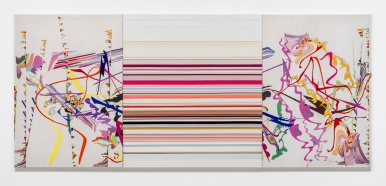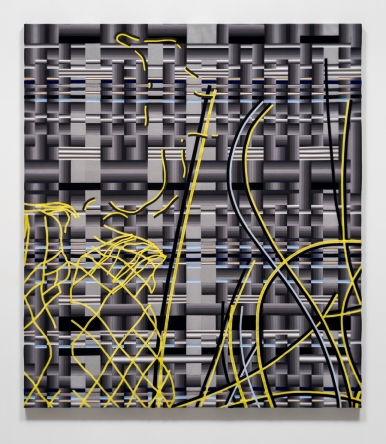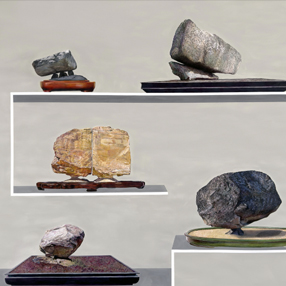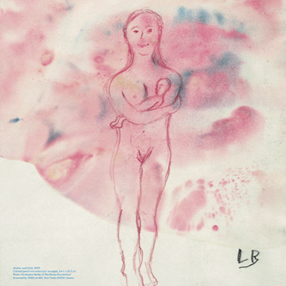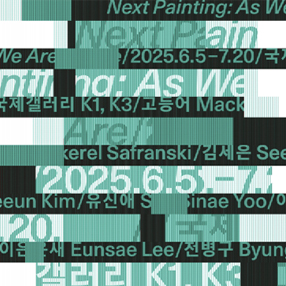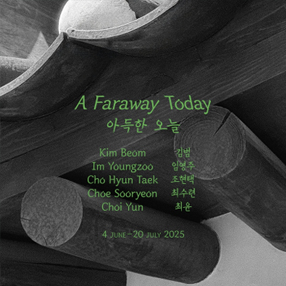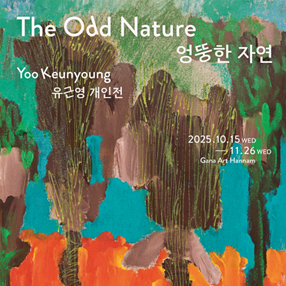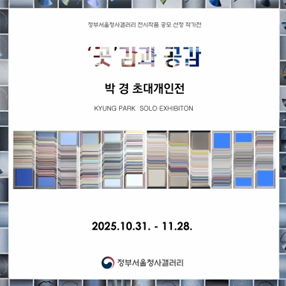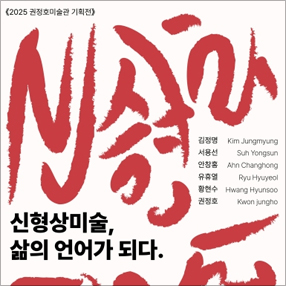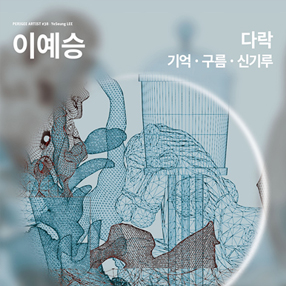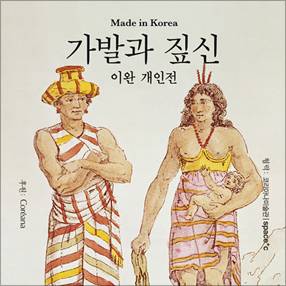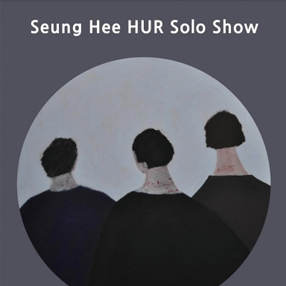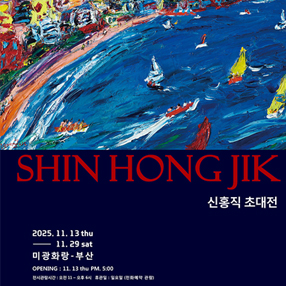본문
-
함경아
유령 그리고 지도 / 시 03WBXS01, 2018-2024, 66.1 x 101.1cm x 5.1 cm Courtesy of the artist and Kukje Gallery 사진: 전병철 이미지 제공: 국제갤러리
-
함경아
유령 그리고 지도 / 시01WBL01V1T, 2018-2024, 140 x 326.6 cm Courtesy of the artist and Kukje Gallery 사진: 전병철 이미지 제공: 국제갤러리
-
함경아
유령 그리고 지도 / 악의 꽃 01M01V1, 2018-2024, 145 x 145 cm, Courtesy of the artist and Kukje Gallery 사진: 전병철 이미지 제공: 국제갤러리
-
함경아
유령 그리고 지도 / 악의 꽃 02M01V1, 2018-2024, 145 x 145 cm Courtesy of the artist and Kukje Gallery 사진: 전병철 이미지 제공: 국제갤러리
-
함경아
유령 그리고 지도 / “너는 사진으로 왔니 아니면 기차 타고 왔니?” 2408SS013T, 2024, 185.4 x 72.8 x 2.7 cm Courtesy of the artist and Kukje Gallery 사진: 전병철 이미지 제공: 국제갤러리
-
함경아
유령 그리고 지도 / “너는 사진으로 왔니 아니면 기차 타고 왔니?” 2408S01, 2024, 114 x 130 x 4 cm Courtesy of the artist and Kukje Gallery 사진: 전병철 이미지 제공: 국제갤러리
-
Press Release
국제갤러리는 오는 8월 30일부터 11월 3일까지 K1, K3 및 한옥에서 함경아 개인전을 개최한다. 《유령 그리고 지도》라 명명한 이번 전시에서 작가는 자신이 바라보고 경험하는 오늘날의 사회를 세 개의 악장으로 꾸려 공유한다. ‘유령’이란 이 사회를 작동시키는 모든 지시들과 욕망을 환영으로 치환해 총체적으로 지시하는 것으로, 함경아 작업 전반을 설명하는 데 주요한 개념어로 자리잡은 표현이다. 지난 2015년도 국제갤러리 전시에서는 《Phantom Footsteps》, ‘유령 발자국’이라는 제목으로 가시적인 것과 비가시적인 것 사이의 역학을 고찰했다면, 이번 전시를 통해서는 그 발자국들이 그리는, 즉 실체가 있는 세상과 없는 세상 사이를 끝없이 횡단하며 작가가 그려 나가는 세계(지도)를 선보이고자 한다.
K1에는 함경아의 ‘자수 프로젝트’ 작품들이 소개된다. 2008년부터 본격적으로 선보이기 시작한 그의 자수 프로젝트는 히로시마와 나가사키의 원자탄 폭발 버섯구름 사진을 흑백의 자수로 번안하는 등 그 모티브의 선택에서부터 여러 층위의 사회정치적 함의를 적극적으로 포용해왔는데, 그 제작 과정 또한 이 사회의 다양한 차원들을 아우른다. 작가는 자수 도안을 디자인하고, 중개인을 거쳐 그 도안을 북한의 수공예 노동자들에게 전달한다. 예측할 도리 없는 기한의 시간이 흐른 후 이 도안은 다시 제3자를 통해 자수의 형태로 작가에게 돌아온다. 작가는 이 자수 파편들을 갈무리하고 자신이 그 위에 손수 자수를 더하는 등 작품을 완성시켜 캔버스에 엮는다. 작품 캡션에는 이에 투입되는 노동시간이 기입된다. 자수 작업자 한 명당 1,400시간을 썼을 것으로 추산된다는 캡션을 통해, 그리고 그 덕분에 다시 보게 되는 작품 속 수만 갈래의 실타래를 통해 그 익명의 혹은 유령의 존재들이, 그들의 육체노동이 촉각화 된다. 작가에게 있어 자수란 오늘의 물리적 현실이 아닌, 가상의 세계를 통해서만 소통 가능한 대상과 가장 아날로그적인 대화를 이어가는 방식인 셈이다. 실질적인 소통이 불가능한 대상과의 협업이란 끝없는 예측불가능성의 수용을 뜻한다. 작가는 애초에 작품이 완성되리라는 확신을 가질 수 없으며, 남북한 정세에 따라 작품 제작이 기약 없이 유예되는 등 불확실성이 본 작업에 전제된 기본 진행 논리다.
K1에서는 이러한 불안정한 여정을 끝내 완수한 자수 작품들을 볼 수 있다. 일견 내지는 노골적으로 앙리 마티스를 연상시키는 자수 작품 두 점은 마티스가 샤를 보들레르의 시집 『악의 꽃』을 읽고 33편의 시를 직접 골라 자신의 드로잉 작품을 붙였던 데에 착안, 그 시집과 같은 제목을 입었다. 마티스가 보들레르와의 80여 년의 세월 차를 뛰어넘어 공감하며 인간 본연의 모습을 함께 파고들어 탐구했듯, 함경아는 오늘의 풍경을 그리며 마티스를 떠올린다. 또한 K1에서는 함경아 자수 프로젝트 중 대표적인 〈 SMS 〉 시리즈도 볼 수 있는데, 그중 한 작품은 ‘우린 사랑에 빠졌다’고 전한다. 담백하게 낭만적이기 그지없는 이 대사는 사실 의외의 사건에서 비롯된 인용인데, 2018년 도널드 트럼프 당시 미국 대통령이 선거 유세장에서 자신의 외교 성과를 자랑하던 중 북한의 예를 들면서 김정은 북한 국무위원장과 자신이 “사랑에 빠졌다(we fell in love)” 표현했던 것이다. 이렇듯 가장 예기치 못한 순간에 느닷없이 시인의 면모를 보인 정치인이 있는가 하면, K1의 작품들은 이 외에도, 이 사회에 대한 작가의 감정적 소회를 추상화해 일련의 시(poetry)로서 관람객과 공유한다.
앞선 전시장에서 〈 시(poetry) 〉라 명명된 자수 작품들 속의 추상 언어가 한옥 전시장에서는 마치 그 위에 눈물이라도 떨군 듯 번지는 듯한 모양새의 패턴으로 형상화된다. 손자수 뿐 아니라 매그놀리아 에디션즈(Magnolia Editions)와의 협업으로 제작한 테피스트리 작품군과 함께 꾸려지는 한옥 공간에서는 서로 다른 매체로써 가장 회화적으로 수 놓인 천과 천 사이를 거닐게 된다.
작가는 몇 년 전 평론가와의 대화 중, 자신의 자수 작업 과정에 대해 “1만 걸음이 필요하다면, 그 중 9천9백9십9걸음은 결정된 것 하나 없고, 어디로 가는지 알 수 없고, 어떤 일이 벌어질지 예측이 전혀 불가한 상태로 걷는 것”이라 묘사한 적 있다. 한 치 앞을 알 수 없는 제작 문법에 익숙해질 법도 하지만, 최근 몇 년은 팬데믹과 정치 상황의 변동으로 유독 기약 없는 기다림이 길어지는 시간이었다. K1에서 선보이는 〈 유령 그리고 지도 / 시01WBL01V1T 〉 삼면화 작품에서 작가가 여러 줄의 리본테이프를 횡으로 길게 줄지은 가운데의 패널을 통해서 기다림의 시간을 형상화했다면, K3에서는 그 기다림의 시간에 대한 보다 적극적인 해석을 펼쳐 놓는다. 컴퓨터 프로그래밍의 한 화면인 듯, 직조된 그리드 위의 추상표현주의적 분출인 듯, 다른 차원의 매트릭스를 하나의 캔버스 위에 펼쳐 놓은 듯한 K3의 작품들은 〈유령 그리고 지도 / “너는 사진으로 왔니 아니면 기차 타고 왔니?”〉 라는 제목으로 엮인다. 이는 존 버거(John Berger)를 인용한 것인데, 『제7의 인간』에서 그는 사진을 수송의 형태이자 부재의 표현이라 설명하며 이렇게 쓴다. “한 친구가 꿈속에서 나를 보러 온다. 멀리서 찾아온 친구다. 꿈에서 나는 그에게 물었다. 너는 사진으로 왔니 아니면 기차 타고 왔니?”
우리가 접하는 디지털 세상 내지는 가상의 세상은 물리적인 현실을 모방하지만, 실은 그 현실과는 별개인 또 다른 하나의 새로운 실체가 되어 존재한다. 그간 꾸려온 자수 프로젝트의 진행 방법상 (이 현실의 세계에서는 닿을 수 없는 대상과 아날로그적 소통을 꾀하는 작업 특성상) 그 누구보다 이 문제에 천착했을 작가는 특히 팬데믹 시기를 거치면서 가상세계 속의 소통과 현실 속 아날로그적 소통 간의 괴리 및 연관성에 대해 고찰하게 된다. 과연 무엇이 진정한 실체인지를 고민하는 과정에서 작가는 오히려 개인의 감정을 만난다. 물리적인 세상에서 점점 멀어지고 점점 더 가상의, 디지털화된 세상 안을 살아가고 있는데, 이때 우리가 접하는 여러 자극 및 정보 소스들과의 화학작용에서 폭발하는 우리의 감정만큼은 점점 더 원시적이고 아날로그적으로 증폭되어 간다는 것이다. 다양한 패브릭의 리본테이프로 엮은 K3의 작품들은 이렇게 두 가지 영역 내지는 차원이 충돌하는 오늘날의 세상에 대한 작가의 추상적 초상인 셈이다.
Kukje Gallery is pleased to present Phantom and A Map, a solo exhibition by Kyungah Ham from August 30 to November 3 in K1, K3, and Hanok. Organized in three chapters, Ham’s exhibition frames her interpretation of today’s society beginning with the choice of the term “phantom.” A core term embodying Ham’s practice, “phantom” signifies all the invisible cues and connections that power society and constitute the illusion of culture. Following themes Ham explored in her 2015 exhibition with the gallery, Phantom Footsteps, which contemplated the dynamic between the visible and the invisible, Phantom and A Map seeks to present a deeper meditation on the world as it is recorded by these “footsteps”—a map that the artist paints as she constantly moves between the real and the unreal dimensions of this world.
Beginning in K1, Ham has installed work from her iconic Embroidery Project, a series introduced since 2008. Embroidery Project actively embraces various layers of shared sociopolitical memory and meaning—for example, she has translated the mushroom clouds of Hiroshima and Nagasaki into black and white embroidery—while the complex production process she employs also weaves together complex and fraught dimensions of Korean society. As is well known, Ham designs her pieces by first making a sketch, which is then delivered to artisans in North Korea through a secret middleman. After a period of time which cannot be predicted in advance and is steeped in unpredictable circumstances, the finished embroidered work is returned to the artist, once again through a middleman. Most of the time, the initial design comes back in fragmented pieces, each done by a different artisan, after which Ham must combine the fragments into a finished work. This allows the artist to add her own touches as she mounts the fabric onto a canvas frame. Each work acknowledges the hours of manual labor put into the work in the caption. Confronted with the fact that a large embroidery is estimated to have taken 1,400 hours per person, we look anew at the hundreds of thousands of threads that constitute the finished image as well as the manual labor of the anonymous phantom. For the artist, embroidery serves as the most analog means of communication with the people with whom communication is possible not through the physical world, but only the virtual world. Embracing unpredictability is the prerequisite for collaboration with these neighbors who are so close but nevertheless strictly forbidden to contact. With no guarantee that any of the works will be completed, the most fundamental logic for this production, or one certain promise in her production process, is the series of unforeseeable delays as established by the ever-fluctuating political climate between the two Koreas.
K1 presents embroidery works that have completed this fraught journey. Two pieces reminiscent of Henri Matisse are inspired by the late artist’s illustrations for his selection out of Charles Baudelaire’s poetry cycle titled Les Fleurs du Mal, and they share the same title. Just as Matisse had surpassed the temporal gap of eight decades in his referencing of Baudelaire and their common interest in human nature, Ham thinks of Matisse as she paints her landscape of today. Also installed in K1 are works from her representative SMS series, which reproduce Donald Trump’s words speaking about the North Korean leader Kim Jong Un. In boasting his diplomatic record, the former U.S. president referred to his relationship with Kim as a “fantastic relationship,” while at a campaign rally in 2018, he went as far as to declare that “we fell in love.” Aside from a politician uttering romantic words as if he were a poet, the works in K1 genuinely frame poetry as embodying an abstraction of the artist’s sentimental impressions of today’s society.
The abstract language of the embroidery work grouped under the subtitle Poetry in K1 continue on to Hanok, where the works are not only embroidery pieces but also tapestry works produced in collaboration with Magnolia Editions. In these works, formalized compositional gestures coalesce into patterns reminiscent of tears and stains, filling the Hanok space and prompting the audience to engage in a purely optical experience of the painterly woven fabrics.
Ham had described her embroidery production process as: “If the process requires 10,000 steps, I walk 9,999 steps out of the 10,000 with nothing confirmed, with no idea where I am headed, totally unable to predict what will happen.” While one might expect her to have become accustomed to this unique and highly unpredictable process, the recent global pandemic and volatile politics have prolonged the instability in her contact with North Korea. Whereas the middle panel in the triptych Phantom and A Map / Poetry 01WBL01V1T in K1 formalizes the period of waiting through horizontally composed color ribbons, the works in K3 present a more active interpretation of that time. Reminiscent of computer programming or abstract expressionism, the woven net of grids and complex dimensional matrices portrayed in the K3 works is grouped under the title Phantom and A Map / “Did you come by photograph or train?”—a quotation from John Berger’s The Seventh Man, where the author writes the following as he describes photography as a form of transport and an expression of absence: “A friend came to see me in a dream. From far away. And I asked him in the dream, ‘Did you come by photograph or train?’”
The digital world, or the virtual world that we encounter every day, imitates our physical reality, but it exists as an independent entity. In much the same way, the production logic of the Embroidery Project–where the artist seeks an analog communication with those she is not able to meet in real life—has naturally led Ham to be fixated on the relationship between the real and the virtual. Living through the pandemic years, it was only natural that she dove deeper into contemplating the split between communication within the virtual world and that within the real. In contemplating what the true essence of reality is, the artist finds herself facing and championing personal emotions. As we become increasingly distanced from physical reality and become more immersed in the digital world, our emotions exploding amidst the chemistry between disparate stimuli and information sources are becoming even more amplified in a primitive, 'analog' sense. As such, the K3 works, woven with ribbon tapes of various fabrics, are an abstract portrait of today’s world, where two different dimensions and realms continuously collide.전시제목함경아: 유령 그리고 지도
전시기간2024.08.30(금) - 2024.11.03(일)
참여작가 함경아
관람시간10:00am - 06:00pm / 일, 휴일 10:00am - 05:00pm
휴관일매주 월요일
장르회화, 조각
관람료무료
장소국제갤러리 Kukje Gallery (서울 종로구 소격동 58-1 K1, K3, 한옥)
연락처02-733-8449
-
Artists in This Show
-
1966년 서울출생
-
국제갤러리(Kukje Gallery) Shows on Mu:umView All
Current Shows
-
유근영: 엉뚱한 자연 The Odd Nature
가나아트 한남
2025.10.15 ~ 2025.11.26
-
박경: '곳'감과 공감
정부서울청사 갤러리
2025.10.31 ~ 2025.11.28
-
신형상미술, 삶의 언어가되다
권정호미술관
2025.09.02 ~ 2025.11.29
-
PERIGEE ARTIST #38 이예승_다락: 기억·구름·신기루
페리지갤러리
2025.10.13 ~ 2025.11.29
-
이완: Made in Korea 가발과 짚신
코리아나미술관 스페이스 C
2025.10.23 ~ 2025.11.29
-
허승희: 마음이 머물다
청화랑
2025.11.06 ~ 2025.11.29
-
신홍직 초대전
미광화랑
2025.11.13 ~ 2025.11.29
-
이탈리아 국립 카포디몬테 미술관 19세기 컬렉션 : 나폴리를 거닐다
마이아트뮤지엄
2025.08.01 ~ 2025.11.30





